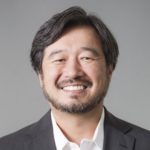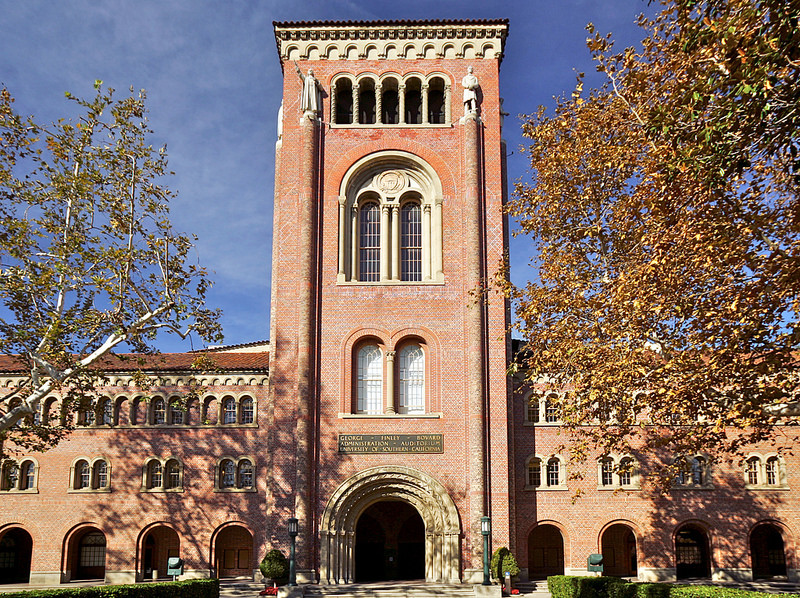Other articles in the March 2018 newsletter:
- President’s Blog
- Joint Retreat: Enhancing our Values and Culture
- Joint Retreat: Addressing Concerns of Community Members
- Joint Retreat: Strengthening our Leadership Model (this article)
On February 23-24, 2018, the Joint Provost/Academic Senate Retreat focused on “Towards a 21st Century University: Culture, Concerns and Governance.” This is part 3 of the 3 part summary of the sessions.
The third retreat session focused on ‘Strengthening our Leadership Model’ with deeper discussion on aligning our leaders with core values, improving shared governance, and how to incentivize and hold our leaders accountable. This session, chaired by Mike Lee (Viterbi), started with presentations from three panelists, followed by breakout groups and report-backs.
Paula Cannon (Keck) summarized the interim recommendations on leadership from the Task Force on Workplace Standards and Employee Wellness and provided additional updates from the Task Force’s Leadership Working Group.
Some key concepts emerged from the documents and discussions of the subgroup. These included leadership is a service versus being an reward for accomplishments and a broader definition of a leader — somebody who can impact or change the culture at USC. All faculty are leaders because of their roles in shared governance, impact on culture, personnel, students, etc. Responsible leaders go beyond adherence to the core values to exemplifying and promoting them. They maintain a high minimum threshold on their personal standards, values, and integrity. They look out for those who work or learn under them by eliciting and attending to concerns, fostering an environment of well-being and fairness, and promoting growth and career development. They also consult with faculty and/or staff as part of shared governance and participate annually in leadership training.
The recommendations fall into two buckets: “how we hire and evaluate our leaders” and “how we expect our leaders to behave.” Hiring and evaluating recommendations included “enhanced background checks” to gain insights into whether an appointee will fit with our core values, “360-degree” evaluations, and faculty to be more of a full partner in appointments by seeing full dossiers and providing input on the whole person and not just accomplishments. Recommendations on the behavior of our leaders included no tolerance for toxic behavior, expectation for exemplary behavior rises as responsibility rises, consultation with faculty/staff regarding appropriate key decisions, final decisions communicated back and explained, and state of the unit reports/speeches to reflect on core values.
A recommendation that is forming in the working group that wasn’t in the original Task Force recommendations was the creation of a Center for Leadership that is to be led by the new Vice Provost for Leadership, Development, and Evaluation. The proposed center will promote the concept of leadership as service, promote a culture of involvement in shared governance, provide training/coaching for new leaders, assist in evaluation of leaders, and provides training/coaching in response to reviews of leaders. The proposed center will help identify and train future leaders, especially from underrepresented groups.
Gregory Keaton (Gould and Dornsife) discussed the shared governance structure that is used at the Gould School of Law.
The Gould shared governance structure is based on the Dean and a consultative faculty body – the Administration and Finance Committee (AFC). This committee consists of 5 faculty members elected annually by the faculty. Because of this, they are faculty who are trusted to give advice to the Dean on behalf of the faculty. The committee meets frequently and most meetings have the Dean present and whichever Associate Deans are appropriate. Examples of items that they are consulted on include: membership of all other committees in the school and their charges; finances – proposed and final budgets; annual faculty merit review evaluations; anything the Dean or members come to the committee with; any academic issues the committee clearly has authority over; sometimes admissions; personnel questions; policy issues; and tenure standards.
Thomas Cummings (Marshall) provided the conceptual grounding on leadership, changing culture at large organizations, and his perspectives on change at USC.
USC has strong shared strategic priorities with a very strong espoused culture. However, there is a gap between the espoused culture and the actual culture that we live day-to-day. We need to close this gap to achieve our strategic priorities. If we are going to change, we must have shared leadership that: values core values, models and reinforces the behaviors of collaborative culture and behavior, institutes a change process that engages USC members and is based on people learning how to behave collaboratively.
Collaborative leadership requires personal, interpersonal, and cognitive capabilities to enact this model – this is learnable. This requires high emotional intelligence, active listening, integrity, transparency, experimentation, dedication to mentoring and developing others, and the deep belief that we care about each other. The change process should be about: learning to be a collaborative culture; a learning process that is systematic, involves data-driven feedback, is full of experimentation and mistakes; multiple stakeholders, with different objectives that may be in conflict; and an action to learning cycle.
We have to develop the capabilities and skills of our leaders, building in human/talent development and training throughout our organization. We need to have the Board of Trustees, President, Provost, and other leaders be involved. Rewards must be tied to how well you can learn to behave collaboratively in addition to being tied to achievements. Periodically and systematically measures are needed that will provide benchmarks. We need to select leaders who have the skills already, or who can learn. This is the only way to achieve shared strategic priorities.
Four breakout groups discussed: how faculty shared governance needs to be strengthened; how to combine positive leadership and academic productivity; how to improve the hiring/appointment/reappointment processes for academic leaders; and how to facilitate, incentivize, and hold academic leaders accountable. Some highlights included inclusion of core value alignment in hiring and merit reviews, utlizing the AAUP’s assessment tool for shared governance, term limits, and requiring Deans to be more accessible to faculty beyond their perceived fundraising focus.
To discuss go to our Facebook post.

Mike Lee
Secretary General of the Academic Senate
Senior Lecturer of Digital Entrepreneurship and Enterprise Systems
Viterbi School of Engineering

